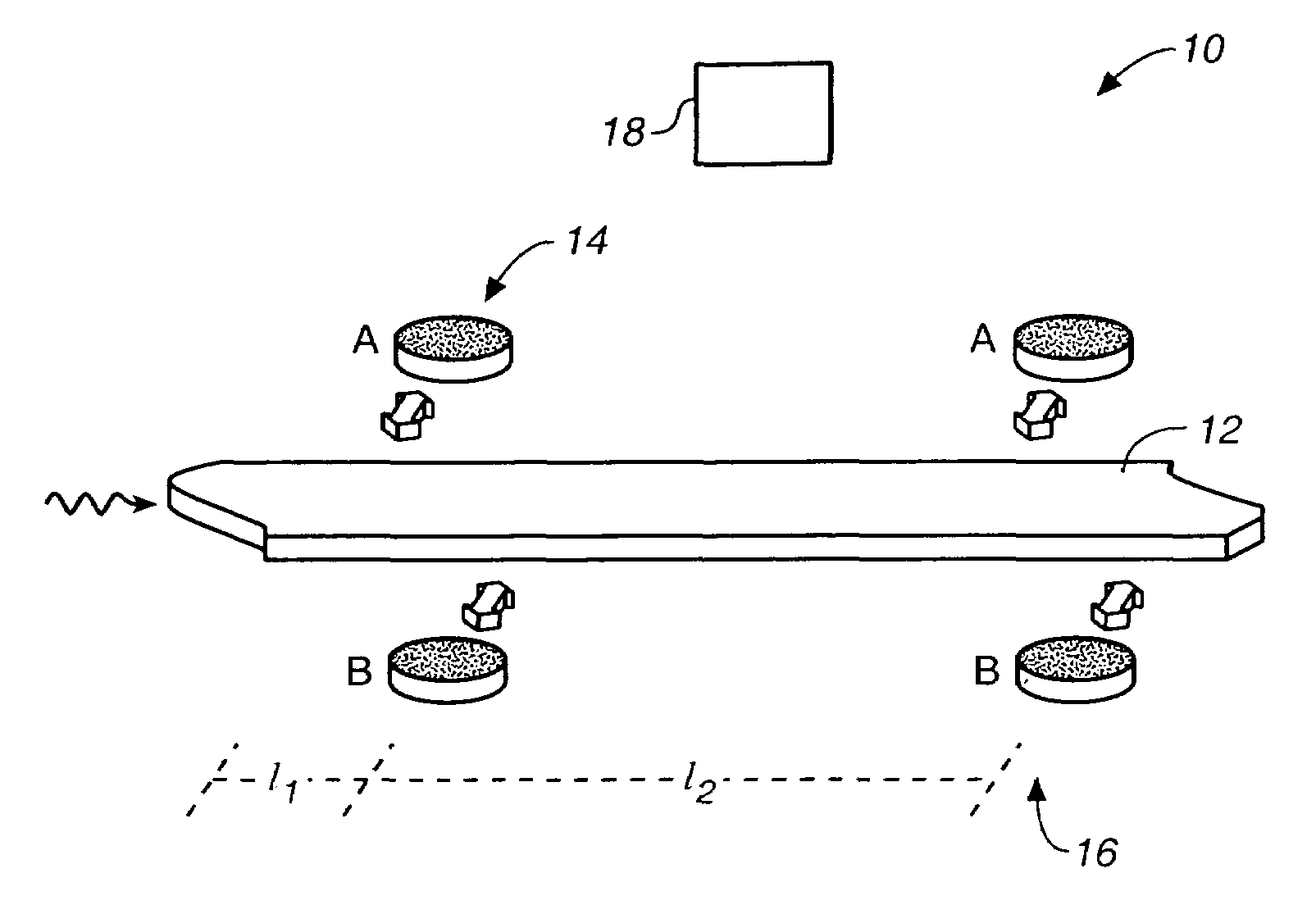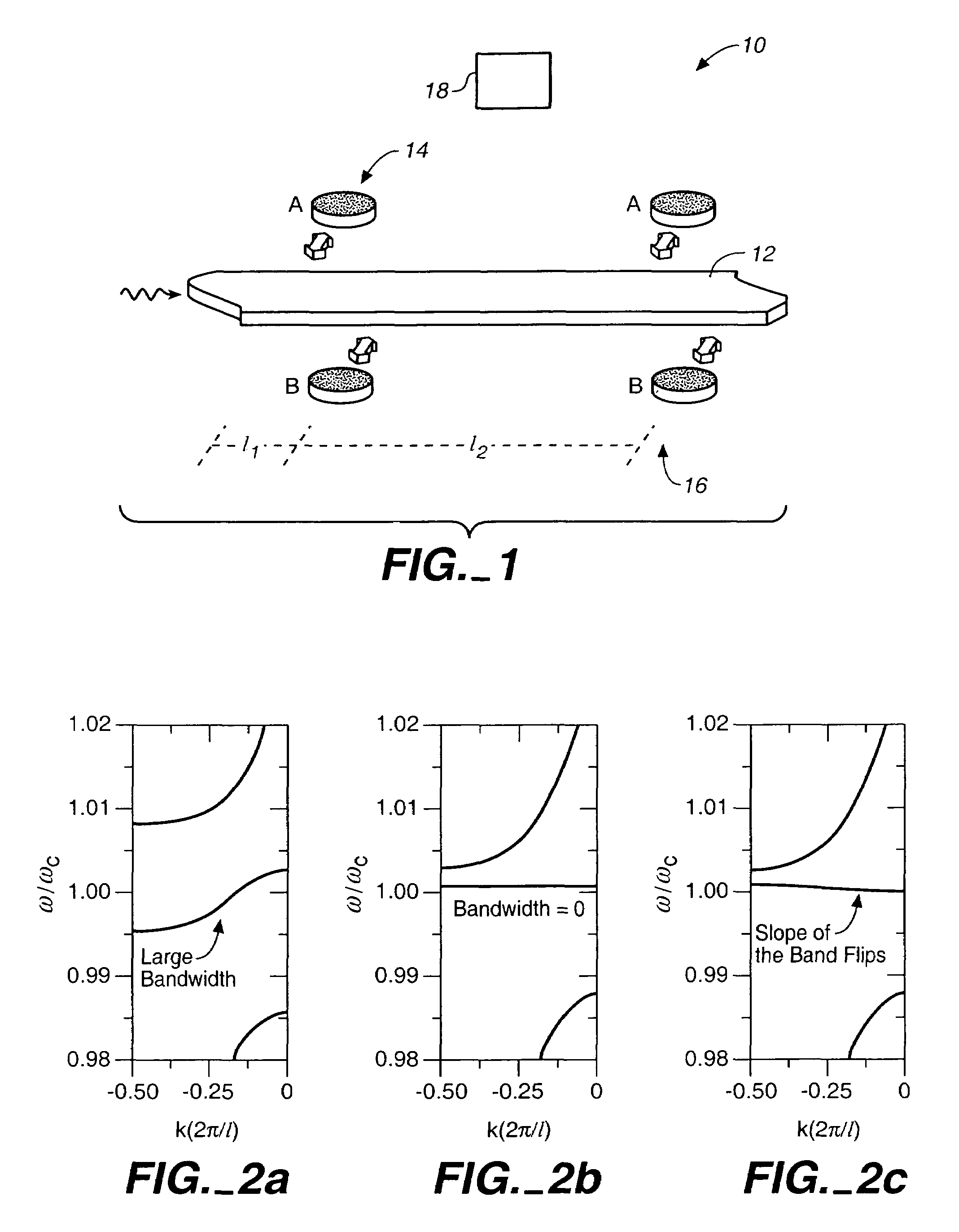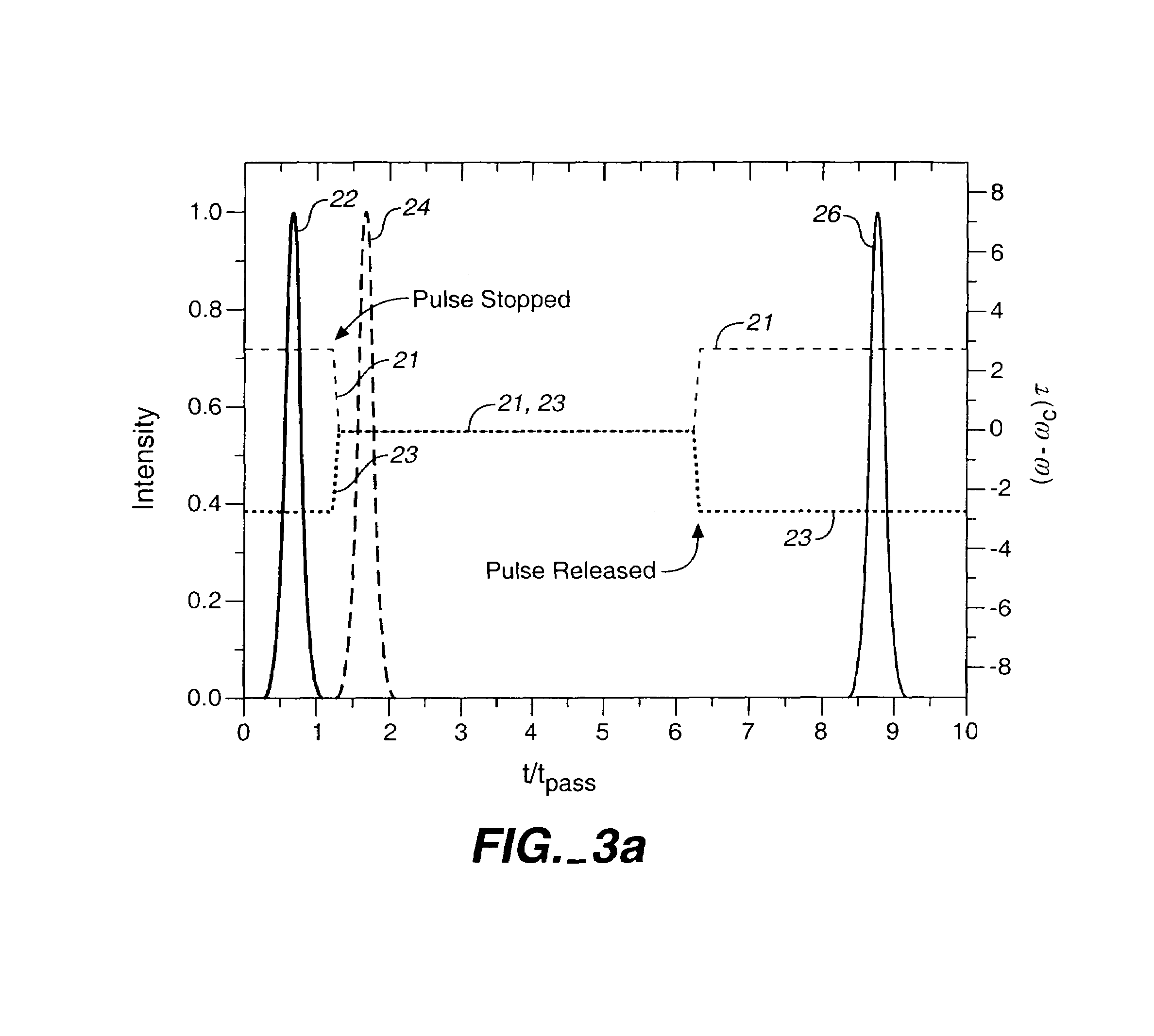Stopping and time reversing light in a waveguide with an all-optical system
a technology of alloptic systems and waveguides, applied in the direction of optical elements, instruments, nanotechnology, etc., can solve the problems of fundamental limitations of resonator systems, severely limit applications, and use of electronic states,
- Summary
- Abstract
- Description
- Claims
- Application Information
AI Technical Summary
Benefits of technology
Problems solved by technology
Method used
Image
Examples
Embodiment Construction
[0010]We theoretically and numerically demonstrate a new and optimal mechanism for stopping light, by constructing a system comprising a waveguide side-coupled to optical resonators, and by modulating the refractive index of the resonators to dynamically compress photon bandwidth. We prove that the group velocity of light can be reduced to absolute zero, with only two resonators per unit cell, due to the presence of EIT-like interference effects. We also show that in such a system, the adiabatic bandwidth compression process is protected by the presence of a large photonic band gap, which makes a fast compression process possible.
[0011]We consider a translationally invariant system 10 (FIG. 1), in which a waveguide 12 is coupled to two side-cavities (A and B) in each of the two unit cells 14 and 16. The system may comprise more than two unit cells of the same construction. The cavities A of such cells then form a linear sequence of resonators, and so do cavities B in such cells. The...
PUM
| Property | Measurement | Unit |
|---|---|---|
| frequency | aaaaa | aaaaa |
| frequencies | aaaaa | aaaaa |
| resonance frequencies | aaaaa | aaaaa |
Abstract
Description
Claims
Application Information
 Login to View More
Login to View More - R&D
- Intellectual Property
- Life Sciences
- Materials
- Tech Scout
- Unparalleled Data Quality
- Higher Quality Content
- 60% Fewer Hallucinations
Browse by: Latest US Patents, China's latest patents, Technical Efficacy Thesaurus, Application Domain, Technology Topic, Popular Technical Reports.
© 2025 PatSnap. All rights reserved.Legal|Privacy policy|Modern Slavery Act Transparency Statement|Sitemap|About US| Contact US: help@patsnap.com



